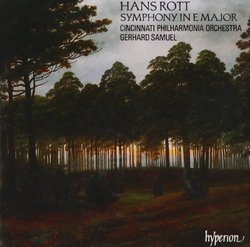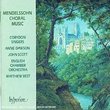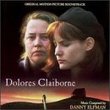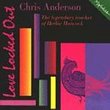| All Artists: Hans Rott, Cincinnati Phil Orch, G Samuel Title: Symphony 1 Members Wishing: 0 Total Copies: 0 Label: Hyperion UK Release Date: 11/16/1993 Album Type: Import Genre: Classical Style: Symphonies Number of Discs: 1 SwapaCD Credits: 1 UPC: 034571163666 |
Search - Hans Rott, Cincinnati Phil Orch, G Samuel :: Symphony 1
 | Hans Rott, Cincinnati Phil Orch, G Samuel Symphony 1 Genre: Classical
|
Larger Image |
CD DetailsSimilar CDs
|
CD ReviewsFull of youthful flaws. But, ultimately, fascinating. Bob Zeidler | Charlton, MA United States | 03/19/2002 (4 out of 5 stars) "Discovering that this Symphony in E Major by Hans Rott (1859 - 1884) had been a work from which Gustav Mahler might have "borrowed" ideas and themes for his early works was all that was required for me to "investigate further" by acquiring this recording. It is an understatement to say that my first few hearings of it were full of surprises. But it's awfully easy to jump to a possibly wrong conclusion. "Some study required" first. Rott had been - for a century or so - little more than a curious footnote to music (and particularly Mahler music) history, one about whom we can only wonder "what might have been," had he lived longer. With the musicological research that was necessary to reconstruct the score for this premiere recording effort as a starting point, Rott may turn out to be more than just a footnote. Two years older than Mahler, he was - with Hugo Wolf - a student friend of Mahler's when all were at the Vienna Conservatory. He was also one of Anton Bruckner's organ pupils; in fact, Bruckner's favorite. (Because Rott did study formally with Bruckner, and Mahler did not, some describe Rott as the "missing link between Bruckner and Mahler." But that is a topic for a different discussion.) About the music: The work can be described as consisting of three unequal pieces: A first half - the first two movements - which is clearly Brucknerian/Wagnerian in influence, a third-movement Scherzo in which many of the "interesting things" - the Mahler similarities - occur, and a final movement which, in a well-intentioned effort on Rott's part to gain the attention of Brahms, ultimately fails because Rott tries to combine the styles and rhetorics of both Bruckner and Brahms, to no good end. (Had Rott survived to work further on this symphony, I sense that he would have started by "cleaning up" this overloaded Finale.) Despite the unequal quality of the movements, one can hear Mahlerian "pre-echoes" as early as the first movement, where Rott's writing for solo trumpet is eerily reminiscent of the posthorn solo in the Mahler Third Symphony (and the trumpet writing in the discarded "Blumine" movement of his First Symphony). This stylistic "pre-echo" occurs again in the third movement, along withsome characteristically Mahlerian writing for solo violin. A theme very much like the "Eternity" theme in the final movement of Mahler's Second ("Resurrection") Symphony, again assigned to solo trumpet, is perhaps the most eerie Mahlerian "pre-echo" of all. The overall harmonic style of the second half demonstrably differs from the Brucknerian first half. It is also very different, overall, than any specific Mahler work, despite the Mahlerian "pre-echoes." It is largely a second half of "unrealized possibilities": Interesting, but hardly fully worked out. About the Mahler-Rott connection: There are two documented facts which verify that Mahler knew this work, first in part and then in whole. In 1878, Rott submitted the first movement of the symphony for the Beethoven Competition prize at the Vienna Conservatory. Mahler would have been familiar with this movement then, submitted to the same competition to which his "Das klagende Lied" scenic cantata was. There is then a twenty-two year gap in the record, until 1900, when documentary proof that Mahler studied the full work during that summer for possible performance the following season exists in the form of correspondence from himself to Natalie Bauer-Lechner, a close friend. (He did not perform it.) It was during this twenty-two year period that Mahler wrote his first five symphonies, at least some of which have brief passing similarities to portions of this Rott work, with the "Eternity" theme from the Resurrection Symphony perhaps being the most immediately identifiable resemblence. But there is a quantum leap from these resemblances (which may turn out to have been purely accidental), to the claim put forth by Paul Banks, the musicologist who uncovered and prepared the score for this performance, writing in the booklet notes, that [there is] "...a conscious or unconscious re-use and creative exploitation of Rott's material by Mahler." The gap in musicological knowledge is at present simply too large. The fullest possible picture of the Mahler-Rott relationship (and the possibility of Rott "influence" on Mahler) is likely to emerge with the publication of Henry-Louis de La Grange's revised English edition of Vol. I of his epic 4-volume Mahler biography. Most Mahlerians accept that La Grange is the most thorough and thoughtful of such writers, and that he will not endeavor to sweep this matter under the rug. Unfortunately, as I write this, La Grange's thoughts are still at least a few years off. And so we wait. About the performance and recording: The Cincinnati Philharmonia (a student orchestra) is more than acceptable, and the sound is quite good, despite a tendency on Rott's part to overscore portions of the work. Of the two recordings of the work, this one is to be preferred. But the work would have been better served had it been performed by a professional orchestra having a tradition in Bruckner and/or Mahler, under a conductor of matching bona fides. One such conductor is Bernard Haitink, and he would be well-served by any of the following: Amsterdam Concertgebouworkest, Berlin Philharmonic or Vienna Philharmonic. It is perhaps telling, regarding the potential historical significance of this work, that a maestro of Haitink's excellence and credentials has yet to commit a performance to disc. There are some gaps in the Mahler-Rott relationship yet to be filled in. Perhaps, once they are, someone such as Haitink will take a run at this flawed, but very interesting, symphony. Bob Zeidler" A must for all Mahler lovers Ryan Morris | USA | 06/04/2000 (3 out of 5 stars) "It isnt hard to determine the influences that created this symphony. A semi skilled listener will at once recognize a wagnerian influence. But the wonder of this rendition of Rotts only symphony is the likeness to those early Mahler symphony. They(Mahler and Rott) were peers and it is striking how this symphony seems to sound as the architype for Mahler's early symphonies which would be released some seven years later. The music itself is pleasing to the ear and was done wonderfully by the Cincinatti Philharmonic. It's most wonderful moment is the Scherzo: Frisch und Lebhaft. On the whole I am glad I own this cd. It is an interesting buy for those who love classical music and especially Mahler. But those who are new to the classics should avoid this until they are more knowledgeable of its influences." Brahms told Rott to Give Up Composing Music Stewart Rorer | New York, NY United States | 11/20/2002 (5 out of 5 stars) "After listening carefully to this CD, I have to say that I enjoyed it more than any symphony Brahms ever wrote! It has great exuberance and rich orchestration. The scherzo is marvelously humorous. My profound gratitude to those who brought this work to the light of day. I will be listening to it again."
|

 Track Listings (4) - Disc #1
Track Listings (4) - Disc #1



